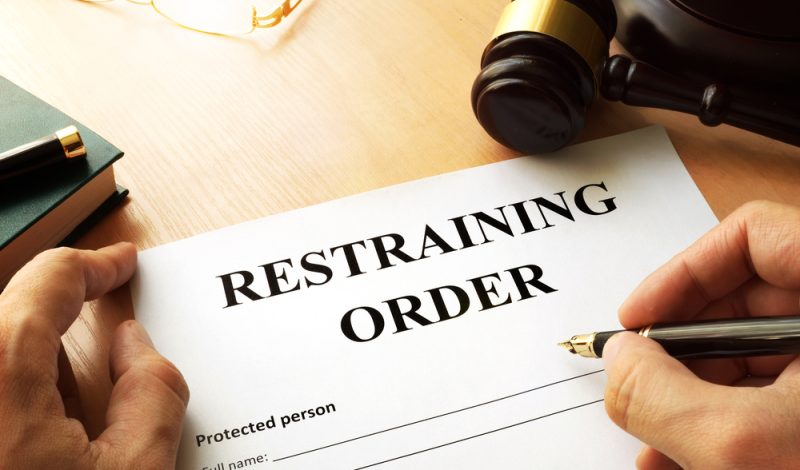Social media platforms have become an inseparable part of daily life. We share photos, comment on posts, and react with emojis—often without a second thought. But if you're subject to a restraining order, even seemingly harmless activity online can carry serious legal consequences. In California, yes, social media posts can count as violating a restraining order, depending on the content, context, and the terms of the order.
At Flores Legal Allies, we represent clients across San Diego and Los Angeles who are navigating complex criminal and restraining order matters. Many of our clients are surprised to learn that even a “like” or tagged post can be used as evidence of a violation. We'll explain how social media behavior is viewed by California courts, what to avoid if you're under a restraining order, and what to do if you've been accused of violating one.
Understanding Restraining Orders in California
A restraining order (also called a protective order) is a legal order issued by a court to prevent contact between individuals. These orders are common in cases involving:
- Domestic violence
- Harassment
- Stalking
- Threats or intimidation
Depending on the case, a restraining order can prohibit:
- Direct contact (in person, phone, text, or email)
- Indirect contact (through third parties or public communication)
- Being within a certain distance of the protected person
- Possession of firearms
- Visiting certain places (home, school, workplace)
Violating any of the terms of a restraining order is a criminal offense under California Penal Code § 273.6.
How Social Media Can Violate a Restraining Order
Modern restraining orders often include language that prohibits all forms of contact, including digital or electronic communication. That includes Facebook, Instagram, TikTok, X (formerly Twitter), Snapchat, LinkedIn, and other platforms.
Here are ways that social media activity can violate a restraining order:
1. Tagging or Mentioning the Protected Person
If you tag the protected person in a post, comment, or photo—even if it’s not hostile—it may be viewed as an attempt to contact them. Courts have ruled that this kind of digital interaction can constitute a violation.
2. Messaging or Replying via Social Media
Sending direct messages, replying to stories, or commenting on posts can be considered direct contact, especially if the restraining order prohibits all communication.
3. Posting Content Aimed at the Protected Person
Even if you don’t tag or mention them by name, a post that clearly refers to the protected person or situation (e.g., subtweeting, veiled threats, or public accusations) may be seen as an indirect violation of the restraining order.
4. Encouraging Others to Contact the Protected Person
If you post something that leads others to harass or contact the protected person on your behalf—even indirectly—it can be seen as a violation through a third party.
5. Using Fake Accounts to Monitor or Engage
Creating a fake profile to view, message, or interact with the protected party may not only violate the restraining order—it could lead to additional stalking or harassment charges.
Real-World Examples
Let’s look at some real-life scenarios that can lead to legal trouble:
- Example 1: A person under a domestic violence restraining order posts a selfie and tags their ex-partner, writing “Miss you.” Even if the tone is friendly, the act of tagging violates the no-contact clause.
- Example 2: A man posts a vague message like “She’ll regret this” with a photo of a courtroom. The ex-partner sees the post and believes it’s aimed at her. If the court agrees, this can be viewed as intimidation.
- Example 3: Someone shares screenshots of past conversations with the protected person, making negative comments. Even though it’s a public post, it can be interpreted as an indirect attempt to harass or shame.
What Must Prosecutors Prove?
To convict someone of violating a restraining order, the prosecution must prove:
- A valid restraining order was in place
- The defendant knew about the order
- The defendant willfully engaged in conduct that violated the terms
- The act was not accidental or unintentional
Social media violations can be tricky because the intent behind a post is often subjective. But if the judge believes the post was meant to communicate with or about the protected person—especially in a harassing or threatening way—it may be enough to convict.
Penalties for Violating a Restraining Order via Social Media
Violating a restraining order is a criminal offense under Penal Code § 273.6, and the consequences can be serious—even if the violation was digital.
First Violation (Misdemeanor):
- Up to 1 year in county jail
- Up to $1,000 in fines
- Possible probation
- Court-ordered counseling or anger management
Aggravated Violation or Repeat Offense:
- May be charged as a felony
- Up to 3 years in state prison
- Increased fines
- Possible loss of firearm rights
If the post causes fear, emotional distress, or includes threats, the court may impose harsher penalties—even for a first offense.
Defenses to Social Media-Based Violations
At Flores Legal Allies, we’ve successfully defended clients accused of restraining order violations based on online conduct. Common defenses include:
1. Lack of Intent
If you posted something publicly without intending for the protected person to see or interpret it as directed at them, we may argue that the action was not willful.
2. No Direct or Indirect Contact
We may demonstrate that the post did not tag, message, or refer to the protected party and was general in nature.
3. Mistaken Identity
In some cases, someone else may have used your account, or a third party may have tagged the protected person without your knowledge.
4. Protected Speech
If the post was related to a public matter and not harassing or threatening, it may be protected by the First Amendment. However, this is a narrow and complex defense that must be handled with care.
What to Do If You’re Accused
If someone claims you violated a restraining order through a social media post, do not respond online or attempt to contact the person. Instead:
- Take screenshots of the post and surrounding content.
- Avoid deleting anything unless advised by your attorney (deletion can look like an admission of guilt).
- Document any other posts or actions that show no intent to violate the order.
- Contact an experienced criminal defense attorney immediately.
How Flores Legal Allies Can Help
At Flores Legal Allies, we understand how confusing and overwhelming it is to be accused of violating a restraining order—especially for something as common and casual as a social media post.
We work with clients across San Diego and Los Angeles to:
- Evaluate the language of the restraining order
- Analyze the social media content in question
- Develop a strategic, facts-based defense
- Represent you in restraining order or criminal hearings
- Advocate for alternatives to jail, such as counseling or dismissal
We don’t just handle the legal side—we help you regain peace of mind by explaining your rights, options, and what steps to take to protect your freedom.
How We Can Help
Social media has changed the way we communicate—and it’s also changed the way courts evaluate behavior in criminal and civil cases. A simple post can be misunderstood, misinterpreted, or weaponized in legal proceedings.
If you're facing allegations of violating a restraining order through online activity, let Flores Legal Allies step in. We listen. We advocate. And we fight to restore stability to your life.
Call us today for a confidential consultation. Let us help you move forward with confidence and clarity.




